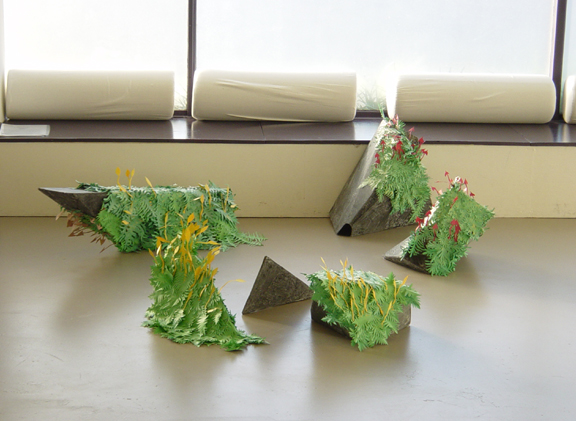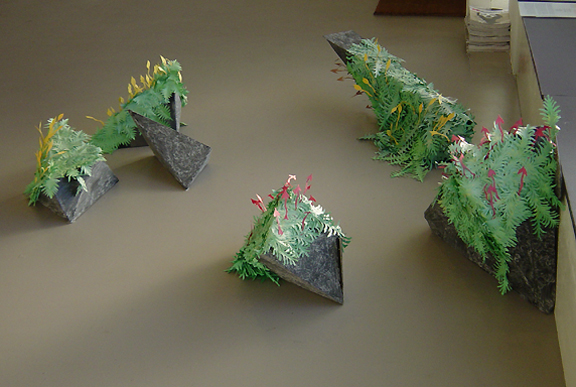 |
Don't Really Dance Much, 2004, acrylic, paper dimensions variable |
 |
Moss has a fragility that makes it not long for this world but also an adaptability and strength in numbers that seems to guarantees its survival. There is an arresting complexity to moss, so why does it lend itself so easily to extracted simplicity? As a nonvascular plant, it is rootless, relying only on the delicate wispy tendrils at its base to anchor it in the world and depending on the support of a friendly, humid environment to sustain it. The endless repetition of its swaying stamens suggests the larger world, suggests infinity—but moss is nothing if not humble. Even in masses, it escapes our attention. How could something so tiny have any significance? Yet it is both beautiful and arresting. Moss can look like a dull worn green rug stretched down some forgotten hall, but seen up close it transforms into a shimmering forest of translucent color: pinks, browns, blues, yellows, and greens-some of its nodding head and tendrils almost transparent. I can get lost looking into moss—can it get lost in me? I like the humble stuff in my house. And for a while now, I’ve liked making bits and pieces into other stuff. In this work, classroom construction paper becomes moss. And although the paper and glue are acid-free, over time the materials may change; the colors may find themselves less brilliant, the edges may wither slightly. It will go its own way, like the rest of the world. Mosses are one of only three types of non-vascular land plants. But they do get around. One type of moss, Sphagnum, has managed to cover 1% of the Earth’s surface (half the USA). Not bad for tiny little rootless nothing of a thing. |
 | |
 |
